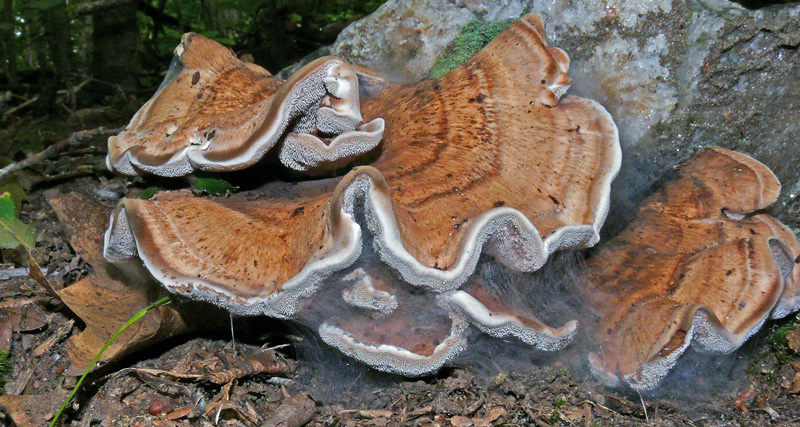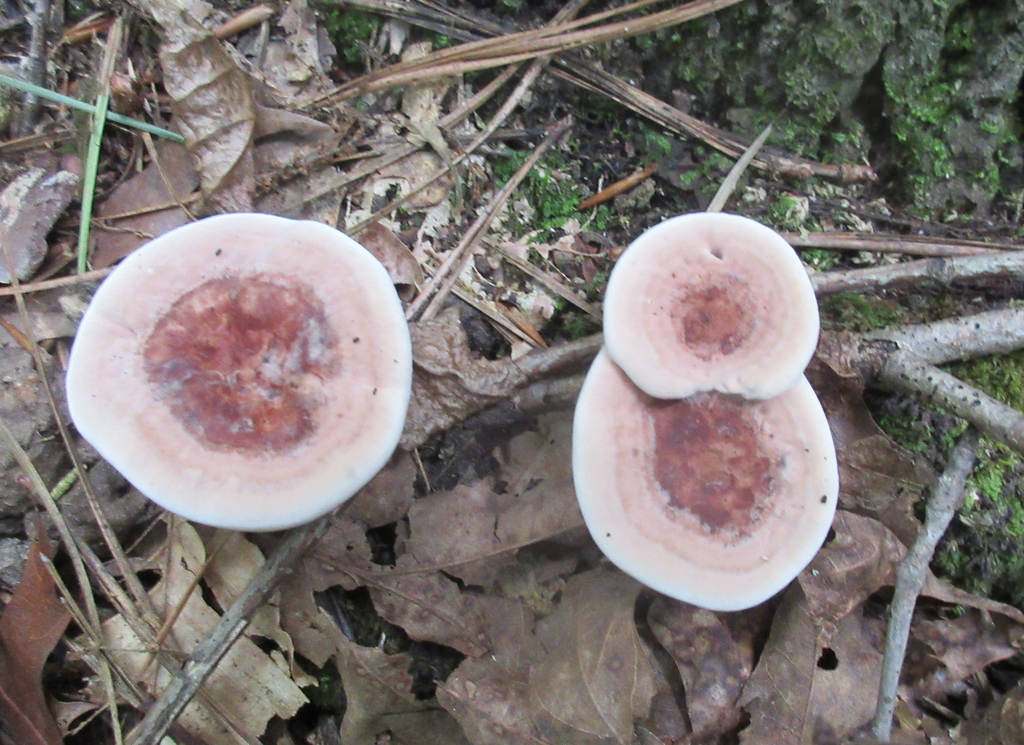Map Snapshot





16 Records
Status
Found scattered or in groups fused on ground under conifers or hardwoods.
Description
Cap: Concentric rings of various colors, margin white (stains purple-brown or black), inner zones various colors; may be convex, flat, depressed, or funnel-shpaed; surface roughened with pits and ridges; flesh orange to
reddish-brown, fibrous, tough; unpleasant odor when cut. Fertile surface: Covered with gray-brown spines (1-3 mm) with paler tips, spines continue down stalk. Stalk: Colored like cap; typically tapers up (J. Solem, pers. comm.).
Seasonality Snapshot
Source: Wikipedia
| Hydnellum concrescens | |
|---|---|

| |
| Scientific classification | |
| Domain: | Eukaryota |
| Kingdom: | Fungi |
| Division: | Basidiomycota |
| Class: | Agaricomycetes |
| Order: | Thelephorales |
| Family: | Bankeraceae |
| Genus: | Hydnellum |
| Species: | H. concrescens
|
| Binomial name | |
| Hydnellum concrescens | |
| Synonyms | |
|
Hydnum concrescens Pers. (1796) | |
Hydnellum concrescens is an inedible fungus, commonly known as the zoned hydnellum or zoned tooth fungus. As with other tooth fungi, the spores are produced on spines on the underside of the cap, rather than gills. It has a funnel-shaped cap, typically between 2 and 7 cm (0.79 and 2.76 in) in diameter, which has characteristic concentric zones of color. The cap may also have radial ridges extending from the center to the margins. The spines are pink in young specimens, but turn brown with age.
This species is very similar in appearance to Hydnellum scrobiculatum, and traditionally, largely unreliable microscopic characteristics such as spore size and ornamentation have been used to distinguish between the two. Recent research has demonstrated a way to discriminate the two species using DNA sequencing of the ITS regions.[1]
References
[edit]- ^ Parfitt D, Martyn Ainsworth A, Simpson D, Rogers HJ, Boddy L (2007). "Molecular and morphological discrimination of stipitate hydnoids in the genera Hydnellum and Phellodon". Mycological Research. 111 (Pt 7): 761–77. doi:10.1016/j.mycres.2007.05.003. PMID 17681224.
External links
[edit]- Index Fungorum synonyms
- Roger's Mushrooms picture and description
- healing-mushrooms.net description, bioactive compounds and medicinal properties







